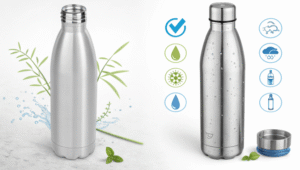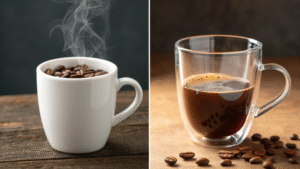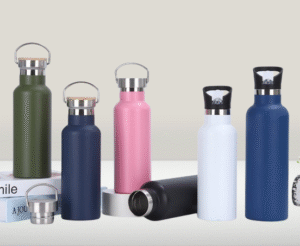Choosing between glass and ceramic for your drinkware line is tough. This decision impacts how customers perceive your brand and whether they feel your product offers premium quality or just average performance.
Neither is universally "better." Ceramic excels at retaining heat for a cozy experience, while glass offers superior taste purity and a modern, visual appeal. The best choice depends on the beverage and user priorities.
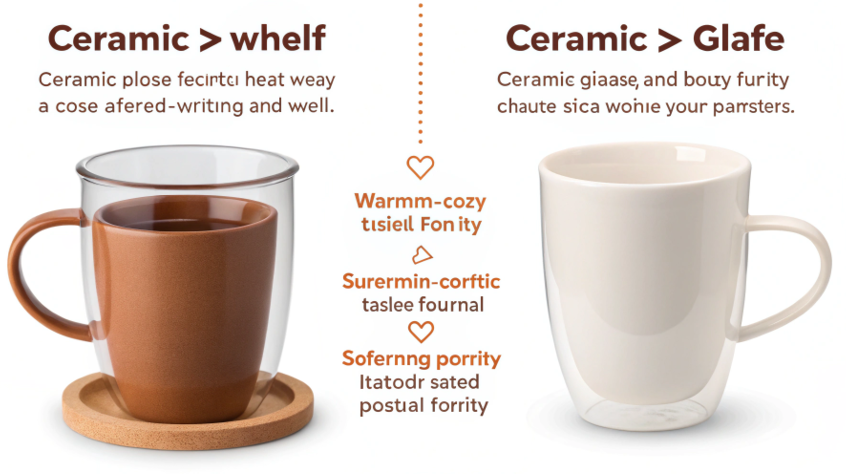
Clients ask me this question constantly. It's like asking if a truck is better than a sports car. The answer depends entirely on your destination. I always guide them to stop thinking about which material is "best" and start thinking about the moment they are designing for. Is it for a slow, cozy morning coffee or a sophisticated afternoon tea? Once you define the experience, the right material becomes obvious.
Is ceramic or glass healthier?
You worry that one material might be safer than another. Making the wrong choice could introduce health concerns for your customers and damage the trust you've worked so hard to build.
Both glass and high-quality ceramic are extremely healthy options. Glass is naturally inert, while modern ceramic becomes equally safe when sealed with a certified lead-free glaze. Health comes down to quality manufacturing, not a battle between materials.
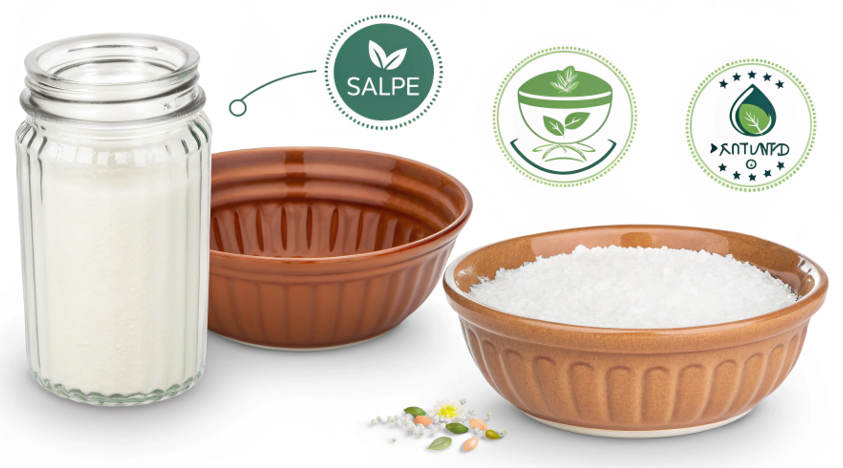
In my years of developing drinkware, I've learned that "health" is a technical specification. It's not just a marketing claim. It is achieved through proper material choice and, most importantly, rigorous testing. For a product developer like Emily, your job isn't just to choose a material; it's to verify its safety. The health of your customer is in your hands, and that starts with demanding proof of compliance from your suppliers. This non-negotiable step is the foundation of a trustworthy brand and a product people love.
A Developer's Guide to Material Purity
Health means non-reactive. You want a material that won't interfere with the drink. Let's look at the science.
| Feature | Glass (Borosilicate) | Ceramic (High-Quality Stoneware/Porcelain) |
|---|---|---|
| Composition | Made from natural elements like sand. Non-porous and incredibly stable. | Made from clay, but its safety relies on the glaze. |
| Leaching Risk | Virtually zero. It's the professional standard for purity in labs for a reason. | Zero if the glaze is lead-free and properly vitrified (fused by heat). |
| Verification Needed | Minimal. The material is inherently pure. | Crucial. Must demand FDA and Prop 65 compliance reports from a third-party lab. |
Glass is safe by its very nature. Modern ceramic achieves the same level of safety through a controlled manufacturing process. As the product developer, the responsibility falls on you to confirm that the factory's process is perfect every time by checking their certifications.
What is the healthiest type of glass to drink out of?
You know glass is a safe choice, but not all glass feels the same. You fear that choosing a standard, cheaper glass could lead to cracking from hot liquids and upset customers.
Borosilicate glass is the healthiest and most reliable type for drinkware. It is prized for its extreme resistance to thermal shock, meaning it won't crack under sudden heat, and its exceptionally pure, non-leaching composition.
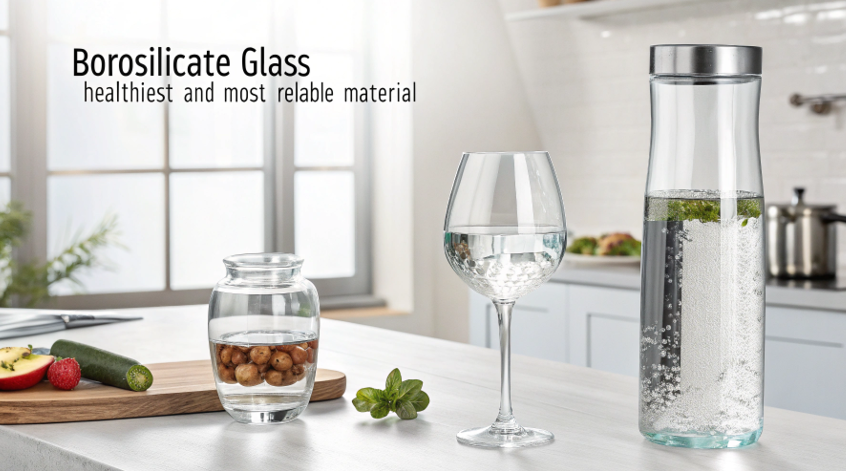
I always push my clients toward borosilicate glass for any premium hot beverage application. I once demonstrated its strength by taking a borosilicate mug out of a freezer and immediately pouring boiling water into it. Nothing happened. That simple test shows the customer a level of quality and safety they can trust. It transforms the product from a simple glass cup into a piece of reliable engineering. This is the kind of hidden value that builds brand loyalty.
Why Borosilicate Is the Superior Choice
For a developer like Emily, specifying "borosilicate" is a key technical decision that elevates the product.
- Standard Glass (Soda-Lime): This is the glass found in most windows and jars. It's perfectly safe for cold drinks. However, it expands and contracts significantly with temperature changes. A sudden shift, like pouring hot coffee into a cold glass, can cause stresses that lead to shattering. This is called thermal shock.
- Borosilicate Glass: This glass has boron trioxide added to its composition. This special ingredient gives it a very low coefficient of thermal expansion. In simple terms, it barely changes size when heated or cooled. This property makes it almost immune to thermal shock. It's why laboratory beakers and high-quality glass cookware (like original PYREX) are made from it. It's also more durable against physical impact and known for its exceptional clarity, making it the ideal choice for a premium, healthy, and safe glass product line.
What's better, ceramic or glass?
The endless debate between ceramic and glass makes your head spin. Committing to one material for a product line feels like a huge risk, with no clear sign of which is truly better.
The "better" material depends on the user's priority. Ceramic is better for maximizing heat retention and creating a cozy, tactile experience. Glass is better for ensuring absolute taste purity and providing a modern, visual appeal.
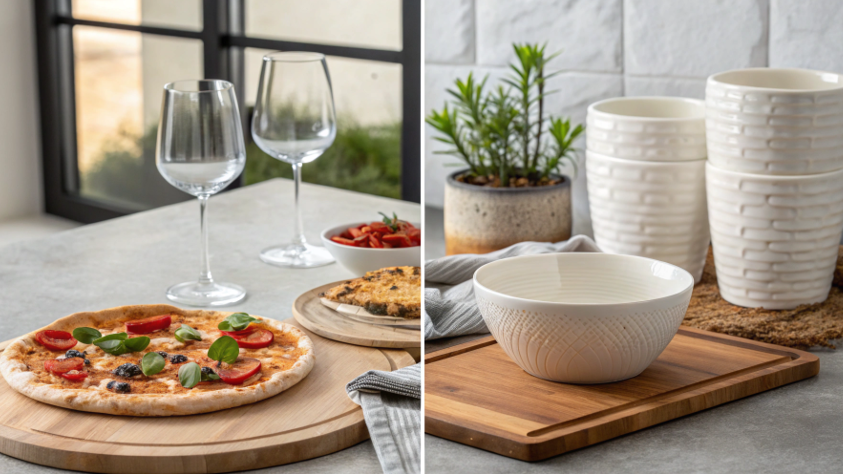
There is no single winner. I worked with a coffee subscription brand on this exact problem. We solved it by using both. For their bold, winter-blend dark roast, we developed a thick-walled, dark blue stoneware mug to communicate warmth and comfort. For their delicate, floral single-origin bean, we chose a sleek, double-walled glass mug to showcase the coffee’s beautiful light color. We didn't choose a better material; we chose the right material to tell the right story for each specific product.
Decision Matrix: Glass vs. Ceramic
To help you choose, let's put them head-to-head on the factors that matter most to a drinker.
| Priority | Ceramic | Glass | The Winner Is... |
|---|---|---|---|
| Keep it Hot | Excellent. Thick walls provide great heat retention. | Fair. Loses heat faster unless it is a double-walled design. | Ceramic |
| Taste Purity | Very Good. A quality glaze is inert. | Perfect. Absolutely zero flavor influence. | Glass |
| Visual Appeal | Cozy & Artistic. Offers endless colors and rustic textures. | Modern & Clean. Highlights the beverage itself. | Tie (Depends on style) |
| Cozy Feel | Excellent. Feels warm and substantial in your hands. | Poor. Can be too hot to hold without a handle or double wall. | Ceramic |
| Versatility | Good. Primarily for hot or room temperature drinks. | Excellent. Perfect for hot, cold, and layered drinks. | Glass |
Use this table to align your product with what your target customer values most.
What material is the best to drink out of?
You are surrounded by options: ceramic, glass, steel, even plastic. This massive choice is paralyzing. You need to know definitively what the best material is to build a focused and successful drinkware line.
There is no single "best" material for all situations. The best material is the one that matches the user's activity: glass for purity at home, ceramic for comfort, and stainless steel for travel and durability.
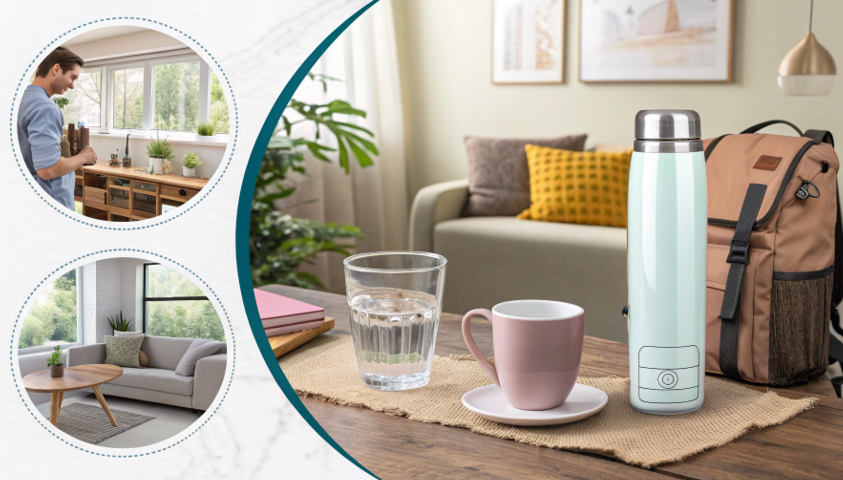
I guide brands through this decision by getting them to focus on context. The "best" material is the one that best serves the customer's immediate need. You wouldn't take a delicate porcelain teacup on a camping trip, and you wouldn't serve a fine wine in a stainless steel travel mug. The goal for a smart product developer like Emily isn't to find the one material to rule them all. The goal is to build a thoughtful product line where each item uses the best possible material for its specific purpose.
Matching the Material to the Mission
Let's break it down by a person's daily routine to find the "best" material for each moment.
- For the Morning Ritual at Home: The winner is Ceramic. Its heat retention and cozy feel make it perfect for a slow, comforting start to the day with coffee or tea.
- For the Connoisseur or Health Purist: The winner is Glass. For someone who wants to appreciate the color of their tea or taste their coffee with zero interference, glass is ideal.
- For the Daily Commute or Office Desk: The winner is Stainless Steel. Its superior vacuum insulation keeps drinks hot or cold for hours, and its durability means it can handle being jostled in a bag.
- For the Gym or Outdoor Hike: The winner is a tie between Stainless Steel and high-quality, BPA-free Plastic (like Tritan). Both offer the crucial benefits of being lightweight and shatterproof.
True success comes from not finding one answer, but from understanding all the answers and deploying them strategically.
Conclusion
It's better to choose glass for its pure taste and modern look, or ceramic for its cozy feel and warmth. The best material is always the one that fits the specific drinking occasion.

